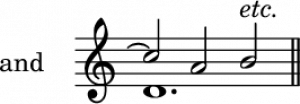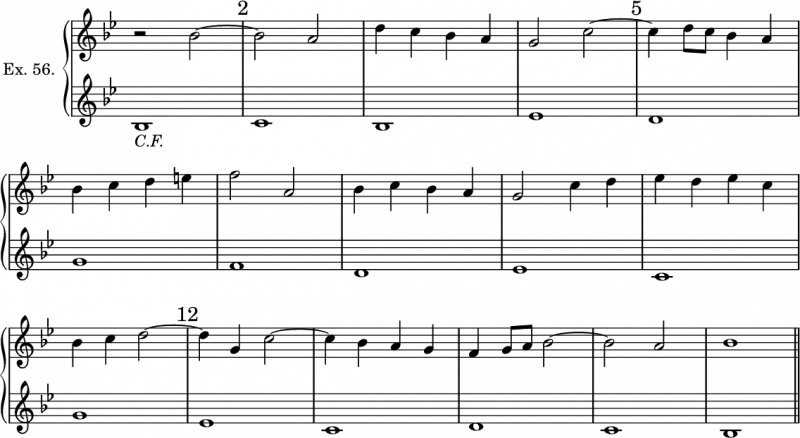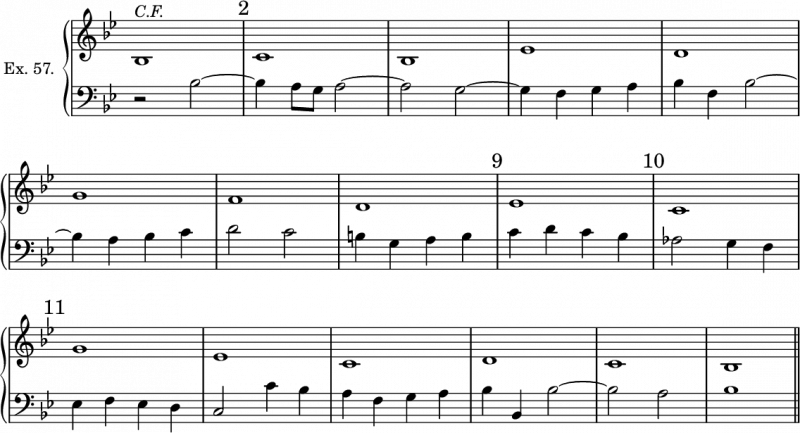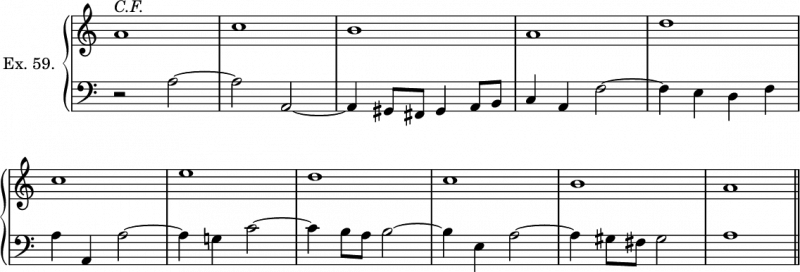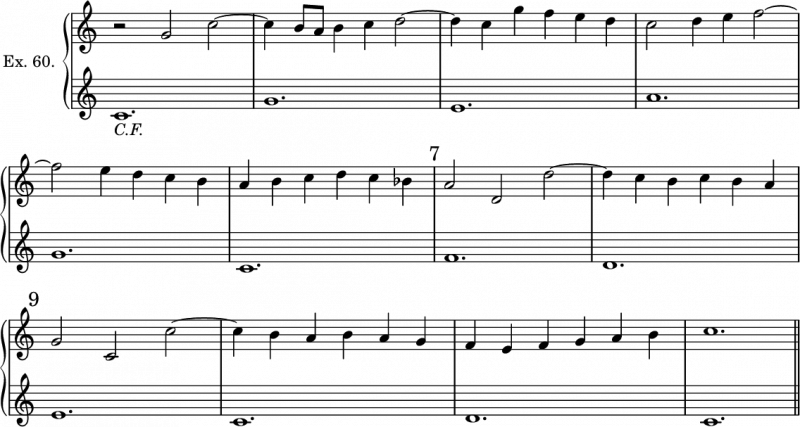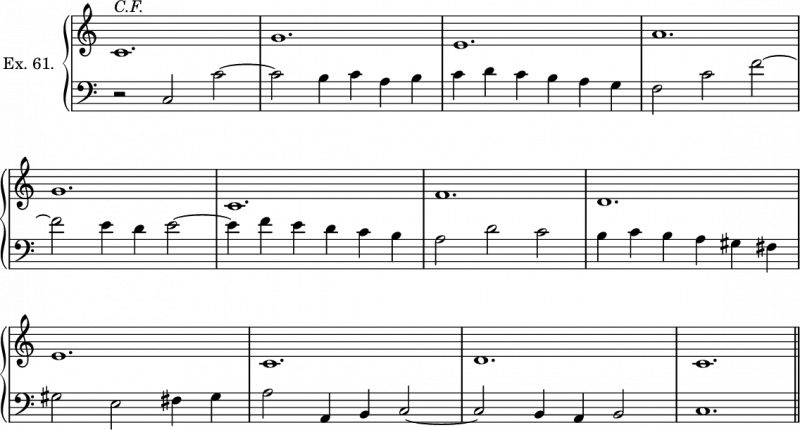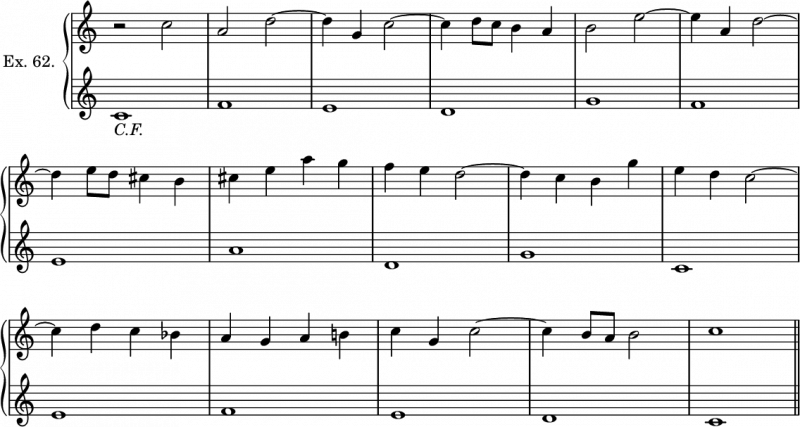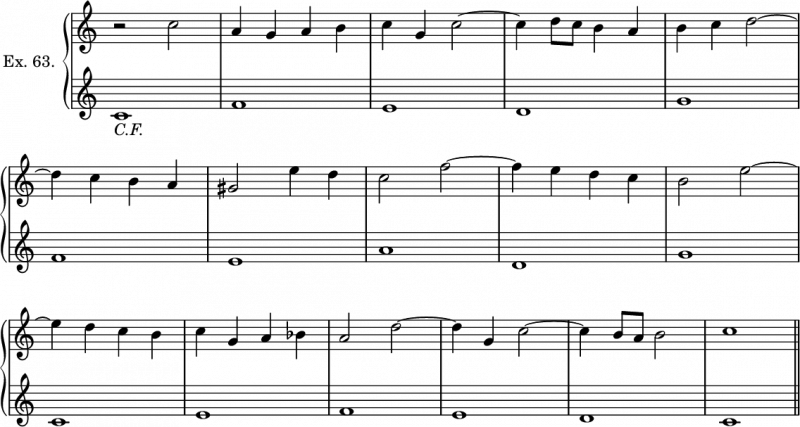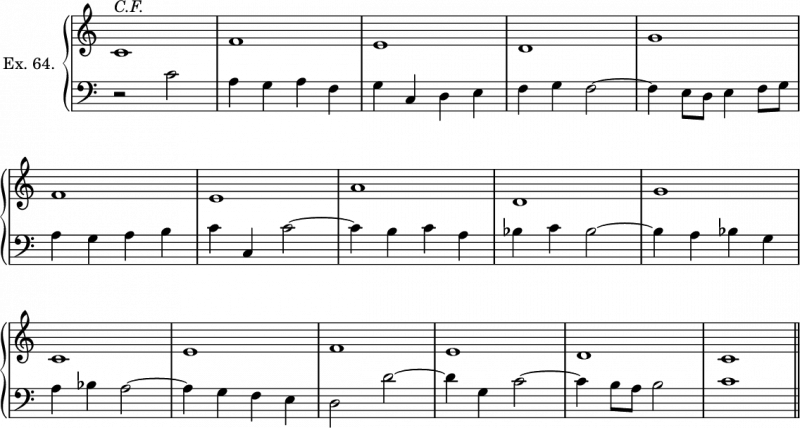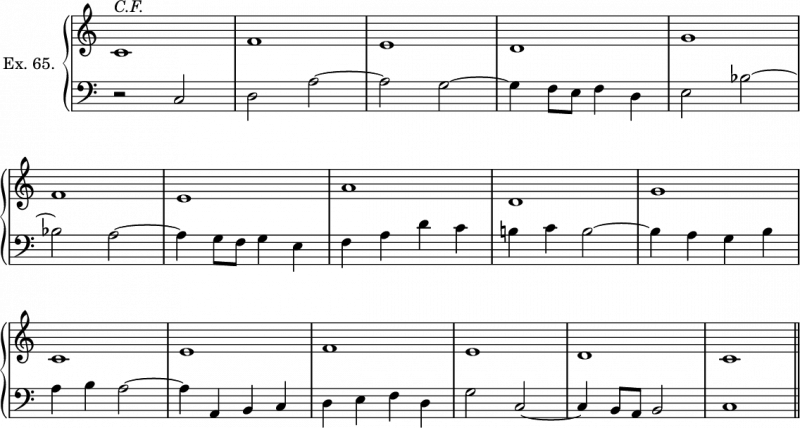Counterpoint (Bridge): Chapter 5
Fifth Species in Two Parts
Florid Counterpoint
This is a mixture of the various kinds of counterpoint explained. In addition to the notes already employed, quavers 1) are admitted, which should succeed each other, and also be approached and quitted, diatonically, and by conjunct movement. More than two quavers are rarely used in one bar, though occasionally four may be met with. They should always occur at the second or fourth divisions of the bar (i.e. the unaccented portions), and four quavers should never be taken in succession. As in the other species in two parts, the counterpoint commences after a crotchet 2) or minim 3) rest. The first note of the counterpoint must be a perfect concord 4).
The counterpoint must be as vigorous and melodious as possible. To insure sufficient variety it will be well not to use one species for more than two successive bars; and the first species should be used only at the last bar. The above rule does not apply to the fourth species, provided that we avail ourselves of the ornamental resolutions. Various examples of these are given below, and their judicious use will add greatly to the effect of florid counterpoint. Most of them may of course be inverted.
The resolutions at a, b may be used in triple meter, thus:
It will be seen that by the use of the ornamental resolutions a minim 5) is often tied to a crotchet 6) (Ex. 55, a). Care must be taken that the first of the tied notes is not of less value than the second. For instance a crotchet should not in this way precede a minim, c; two crotchets should rarely be tied, b.
It will greatly conduce to the vigour and flow of the counterpoint if all minims at the second half of the bar be tied to the first note of the following bar. This should, in fact, always be the case if the minim has been immediately preceded by crotchets or quavers. This rule cannot of course be applied to the last bar but one, as the last note of the counterpoint must be of equal value with the last note of the cantus firmus.
The best cadences are those used in the fourth species, with or without ornamental resolutions. Others, particularly those employed in the third species, are occasionally used.
Musical Examples
Observations on Examples 56-61
Ex. 56: In bar 2 the leading-tone rises a fourth, effectively avoiding a cadence so early in the exercise. In bars 5 and 12 ornamental resolutions are introduced.
Ex. 57: In bar 2 the leading-tone does not rise, in order to avoid a unison on the accented beat of bar 3. The modulation to C minor in bars 9, 10, 11 is perhaps somewhat late in the example.
Ex. 59: Four quavers are introduced in bar 3, and the ornamental resolution at the cadence to carry out a sequence.
Ex. 60: An example in triple meter. The parts cross in bars 7 and 9.


